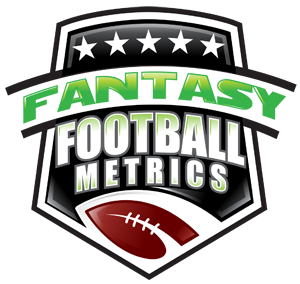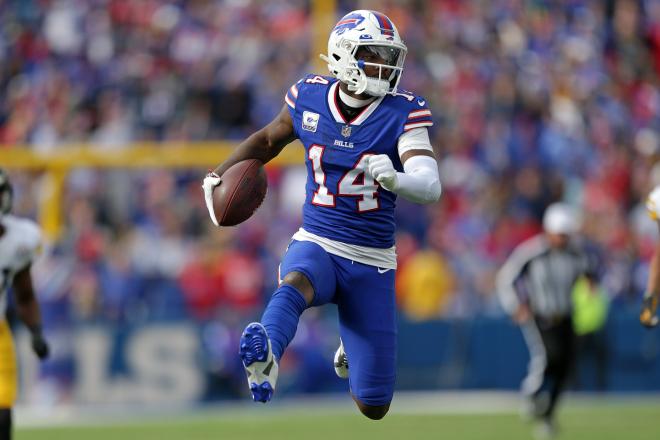In Part 3 of his series, ASL's Founder, Leonard LaPadula, explores WR success rate vs ADP and provides you his strategies for efficiently strengthening your WR position.
RC Intro: Leonard LaPadula is the founder of Advanced Sports Logic, and a long-time friend and colleague of mine. You may know his work as the creator of the DFS Optimizer (that uses FFM for number projections) or way back with the ahead-of-its-time Dynasty/Fantasy software 'The Machine' (which is planned for a comeback/redesign upgrade in the near future! Good news for 'Machine' fans!). Leonard was one of the FFM original customers back in FFM's infancy and has been with FFM for all his Dynasty/Fantasy teams for over a decade. Leonard has some unique, data-driven thoughts about how to manage his Dynasty teams and he shares them in published articles from time-to-time. He thought this report might be of interest to the FFM community, so I'm glad to post his thoughts/data here.
Introduction of the Study
This article is an analytical analysis of dynasty rookie WR draft picks, comparing average draft position (ADP) with success rate. It is the 3rd part of a four part series, which includes How To Add A QB1 To Your Dynasty Team and How To Add An RB1 To Your Dynasty Team.
I do these analyses for myself to manage my own dynasty football team. I was surprised by what I have found so far in both studies. The QB analysis destroyed my long-held belief, that top QBs have the longest NFL longevity of the fantasy football relevant positions. I was shocked to see that generally they peak in year two and decline after that. I also discovered that there seems to a successful band by ADP of QB picks in the 2.07 to 3.03 range. And I found that RBs have a very pronounced drop off after year six.
I didn't find anything quite so surprising with respect to WRs. So, let's dive in.
Historical ADP Information
Based on historical ADP information, this is where receivers backs were drafted over the last nine years: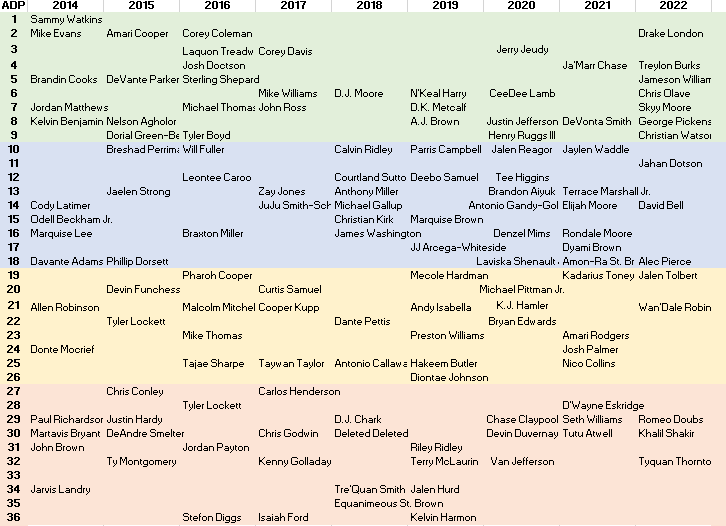
A notable WR that had an ADP greater than 36 is Tyreek Hill. Some top WRs that slipped to the 3rd round of dynasty drafts are Jarvis Landry, Stefon Diggs and Chris Godwin. The steals of the decade have to be Stefon Diggs and Davante Adams (ADP 2.06, 18th overall).
Success Rate vs Years of Experience
The next step in my analysis is to see how these players panned-out since being drafted. In my analysis of QBs, on only evaluated the top-12 QBs, assigning them a value of 1 for ranking top-6, and 0.5 for ranking 7th to 12th. With RBs, since we must start two RBs in my league, I valued the top 24 RBs, assigning them 1 for ranking in the top-6, 0.75 for ranking 7th-12th, 0.50 for ranking 13th to 18th, and 0.25 for ranking 19th to 24th.
For WRs, since we must start three in our PPR league, I valued the top 36, assigning them values accordingly:
- Ranking 1-6: 1.0
- Ranking 7-12: 0.75
- Ranking 13-18: 0.50
- Ranking 19-24: 0.375
- Ranking 25-30: 0.25
- Ranking 31-36: 0.125
Then I took the integral of their results and got this chart:
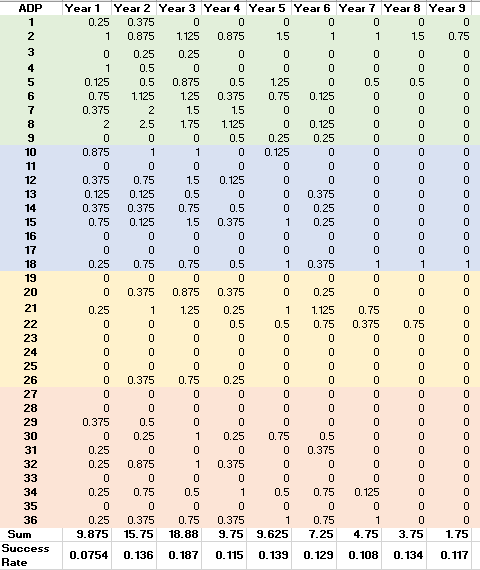
The valuable information pops out in the last row. It shows the success rate versus years of experience. Next I put this information into graphical form:
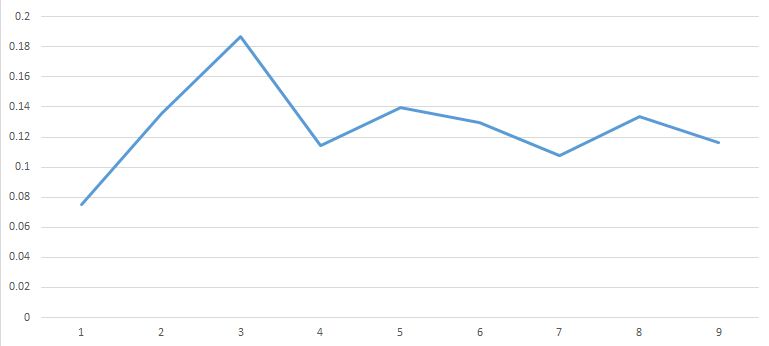
It didn't surprise me to see that WRs have what seems to be a 3-year learning curve. On average they perform best three years in, and then settle out after that. What did surprise me is that they tend to stay fairly flat all the way out to nine years.
Only two rookie WRs made it into the top 36 last year, Chris Olave and Drake London, and they were both WR3s. The chart above should be an encouragement to Olave and London owners, because it seems likely that their best years are ahead of them.
Some 2nd-year WRs that R.C. has ranked highly are:
Checkout our FREE Premium Articles
- RC's Daily Notes 2025: For the Week of 12/8-12/14 (The Week That Was...)
- NFL Draft 2023 Scouting Report: WR Michael Wilson, Stanford (REPRINT from 2023/FREEVIEW)
- 2025 Preseason Wk 3 Game Report: Bears 29, Chiefs 27
- Post-NFL Draft Podcast Appearance with RC and The Podfather
- 2024-25 Game Report/Fantasy Scouting (Super Bowl): Eagles 40, Chiefs 22
